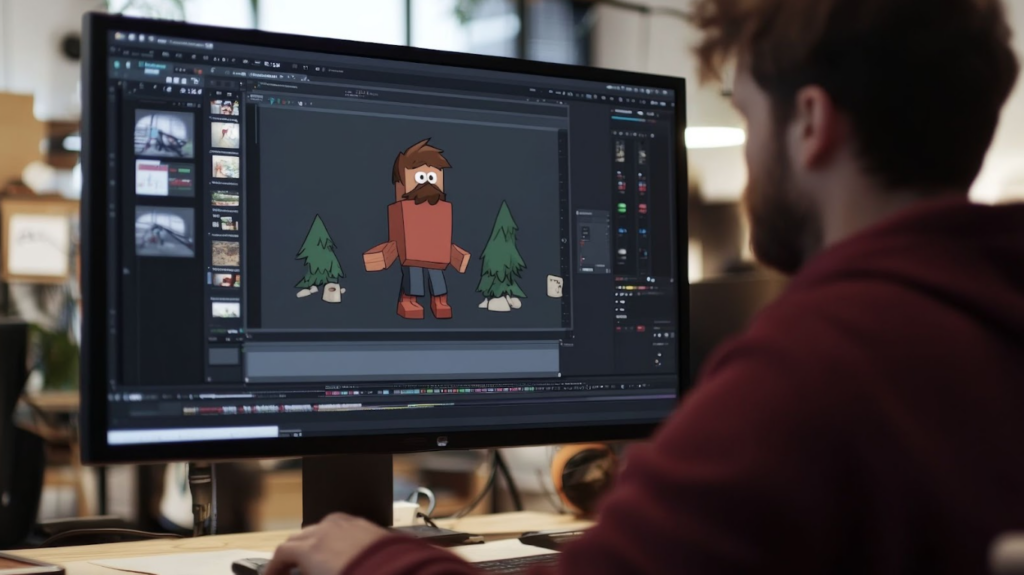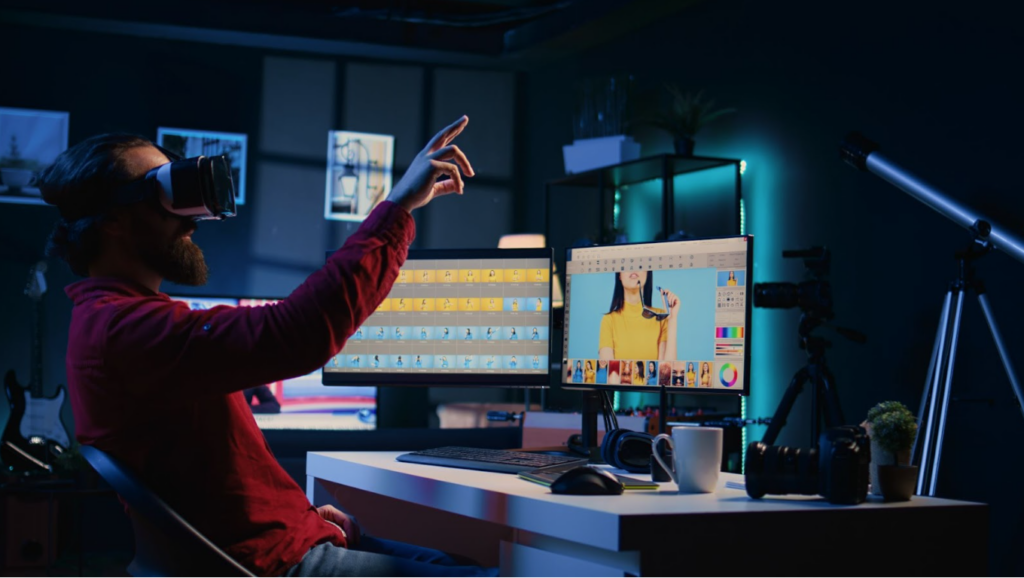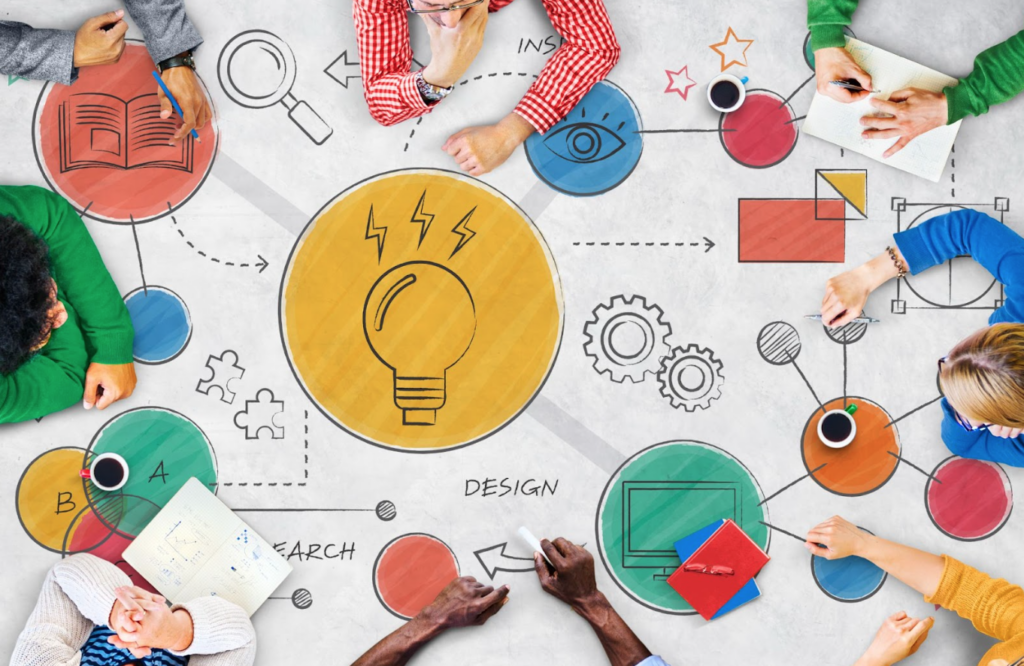The world is becoming increasingly digital, and with it, the role of graphic design is undergoing a profound transformation. Once rooted in print media and static visuals, graphic design today sits at the center of a fast-evolving ecosystem that includes everything from social media to artificial intelligence, immersive technology, and user-centric design.
So what does the future of graphic design look like in this digital-first era? Here’s a deep dive into the key shifts, opportunities, and challenges designers can expect in the years to come.
- Design Will Become More Human-Centered Than Ever

As technology becomes more complex, design will play a critical role in making it feel simple, human, and approachable. In the digital future, good design won’t just look beautiful, it will guide, connect, and empathize.
Expect a surge in demand for:
- UX/UI designers who can create intuitive digital experiences
- Inclusive and accessible design, ensuring that content is usable by all
- Emotional design, which leverages psychology to create more meaningful interactions
Designers of the future won’t just decorate, they’ll solve human problems with empathy and precision.
- AI Will Reshape, Not Replace, Designers

Artificial Intelligence is already impacting graphic design through tools like Adobe Firefly, Canva Magic Studio, and Midjourney. These platforms can generate logos, layouts, and illustrations with simple text prompts.
However, AI isn’t here to take over; it’s here to collaborate. Designers will increasingly act as curators, editors, and strategists, guiding AI tools to produce on-brand, contextually accurate designs.
In the future:
- Designers will automate repetitive tasks (resizing, formatting, mockups)
- AI will assist in ideation, providing early concepts or moodboard suggestions
- Human creativity will still lead the way, especially when nuance and brand storytelling are needed
The most successful designers will be those who know how to use AI as a creative partner, not a shortcut.
- Motion and Interactivity Will Define Visual Identity

Static graphics are no longer enough. In a digital world driven by video, swipes, and scrolls, motion is the new standard.
Expect to see:
- Animated logos that shift subtly or respond to interaction
- Microinteractions in digital products that guide user behavior
- Dynamic branding systems that adapt across platforms and contexts
Brands will increasingly rely on designers who can breathe life into their visuals, using motion to enhance storytelling and build emotional connection.
- Designers Will Need to Master New Digital Platforms

Graphic design is no longer just for print or web. Today’s designers must think about:
- Mobile-first design for phones, tablets, and wearable devices
- Content creation for social platforms like TikTok, Instagram, and YouTube
- Immersive experiences in AR/VR, especially for events, retail, or entertainment
The future designer will be as comfortable designing a Twitch overlay as they are a billboard. Staying versatile and curious will be key.
- 3D and Spatial Design Will Go Mainstream

With the rise of VR, AR, and the metaverse, 3D design is becoming essential. Brands want immersive environments where users can interact with products, spaces, and narratives in three dimensions.
What this means for designers:
- 3D skills will become as important as 2D layout skills
- Platforms like Blender, Adobe Substance, and Unreal Engine will enter mainstream design workflows
- Designers will collaborate with developers and product teams to create multi-sensory, immersive brand experiences
Even everyday design tasks like packaging and product visualization will benefit from 3D thinking.
- Sustainability and Ethics Will Guide Design Decisions

As digital consumption grows, so does awareness around its environmental and ethical impact. Future designers will need to consider:
- Digital carbon footprints of websites and media
- Ethical sourcing of design assets and AI-generated content
- Cultural sensitivity and inclusivity in visuals and messaging
Designers will play a key role in advocating for responsible visual communication, ensuring their work reflects both brand values and global awareness.
- Design Systems Will Become the Backbone of Brands

In an omnichannel world, consistency is everything. Design systems complete with UI kits, typography rules, color palettes, and brand voice guidelines will become essential tools for scaling a brand’s identity.
The future designer will:
- Help build and maintain robust design systems
- Work closely with developers through platforms like Figma or Zeroheight
- Use component libraries to speed up delivery without compromising creativity
Efficiency and consistency will go hand in hand.
- Globalization Will Demand Cultural Sensitivity in Design

The internet has made it easier than ever to reach a global audience, but with that comes the need for cultural awareness.
Designers will need to:
- Adapt layouts and visuals to suit different languages and reading directions
- Avoid cultural appropriation or symbols with unintended meaning
- Understand regional aesthetics, holidays, and values
Designers who are globally informed and locally sensitive will be in high demand.
- Clients Will Expect Designers to Understand Strategy

As design becomes more integral to business, clients will expect designers to offer more than just visuals. They’ll want guidance on:
- Brand positioning
- Audience engagement
- Visual storytelling
- Analytics and performance
Designers who can connect the dots between design and business outcomes will have a competitive edge. Strategic thinking and communication will become as valuable as design execution.
- Education Will Shift from Tools to Thinking

While technical skills will always matter, the designers of the future will thrive on:
- Creative problem-solving
- Storytelling
- Systems thinking
- Collaboration
Design education, whether formal or self-taught, will focus more on mindset and process than just mastering tools. The tools will keep changing, but foundational thinking will remain essential.
The future of graphic design in a digital world is not about survival; it’s about expansion. As platforms, tools, and audiences evolve, so too must designers. But at its core, the mission of design remains the same: to communicate, connect, and create meaning.
Designers who embrace technology, think strategically, and stay deeply human in their approach will not only remain relevant, they’ll lead the next wave of creative innovation.
The digital world is only getting bigger. And for graphic designers, that means more opportunities to shape it.
- How to Create Accessible and Inclusive Designs - October 6, 2025
- Designing for Different Cultures: Challenges, Tips, and the Role of AI - September 3, 2025
- The Importance of Feedback in the Design Process - August 6, 2025


0 Comments